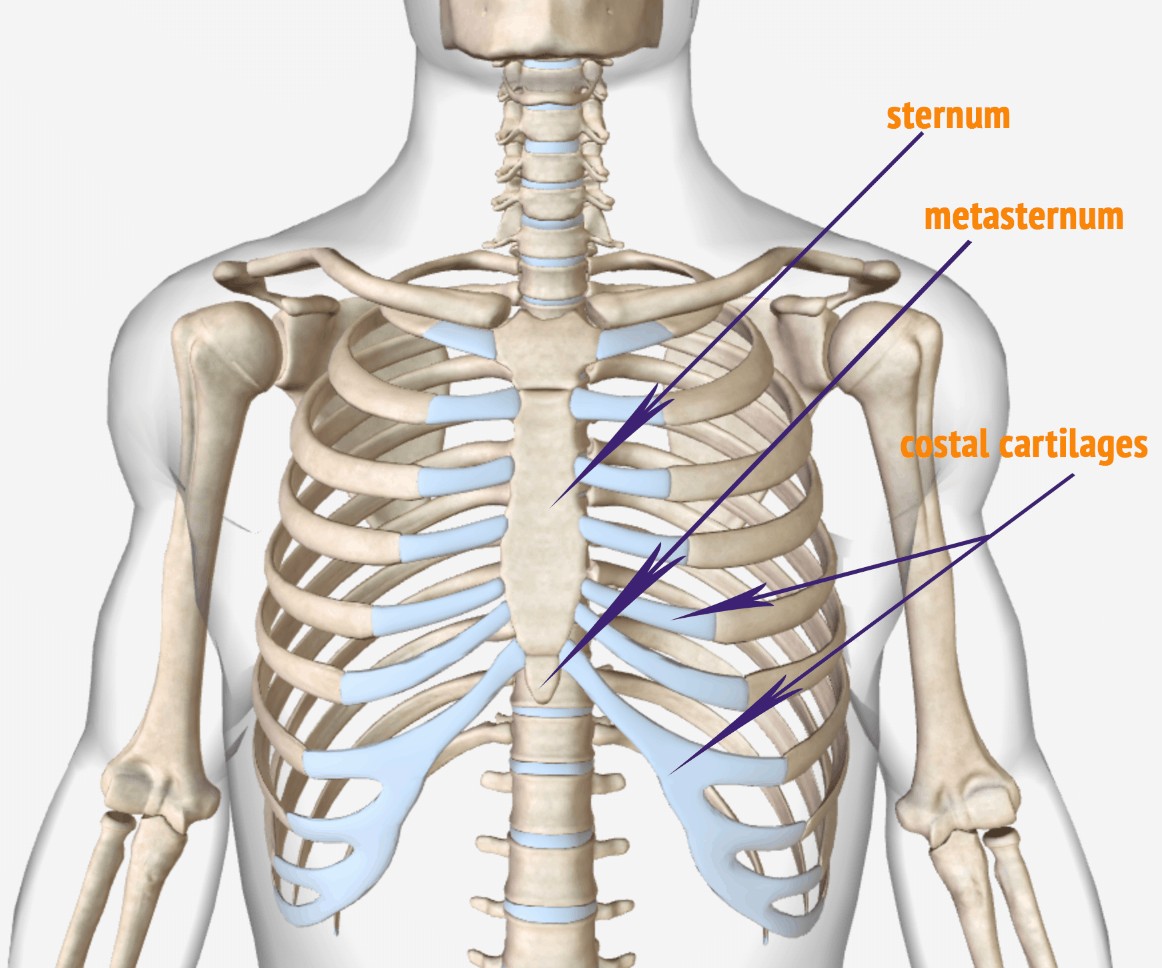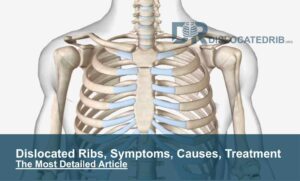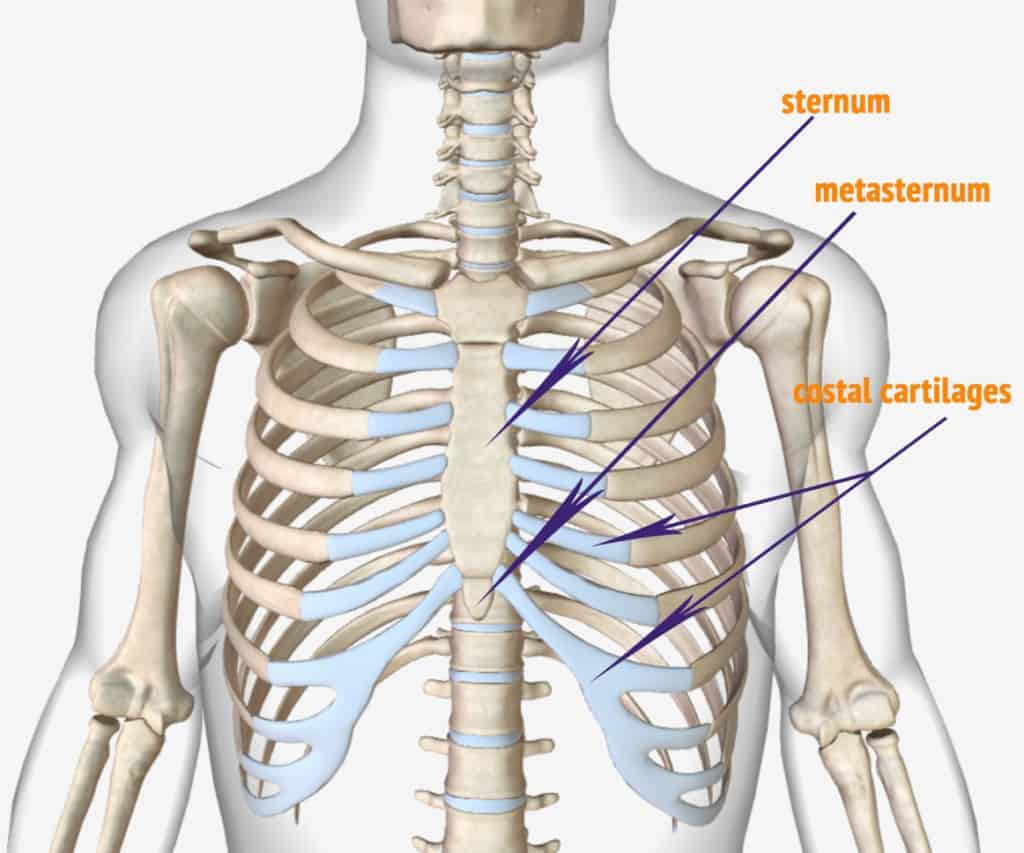
Anatomy of the Human ribs
The Anatomy of the Human Ribs (costae) are one of the integral parts of the chest wall; they make up the lateral part of our body, its anterior and posterior wall and they entirely build the lateral parts of the chest wall.
The anatomy of the human ribs is made up of 24 ribs. These ribs are parted in 12 pairs (each on the left and right side of the chest wall), with the sternum, metasternum(the xiphoid process), and the costal cartilages all situated at the anterior (frontal-side) of the chest wall, followed by the thoracic vertebrae on the posterior of the chest wall.
All 24 ribs are connected at the posterior of the chest wall, each connecting to the building blocks of the spine or vertebrae.
Types of ribs – Human ribs
There are three basic types of ribs according to the anatomy of the human ribs and every 12 pairs of ribs are marked with Roman numerals I-XII or in Arabic numerals 1-12.
Ribs are divided into three groups:
“Although many believe that the human ribs number is grouped into two categories, there are in ONLY two types of ribs according to the medical community, true ribs and false ribs”
True ribs
True ribs, also known as vertebrosternal ribs, proper ribs, or costae verae, are the first seven pairs of ribs in the human body. They are attached directly to the sternum (breastbone) by costal cartilages, which are strips of hyaline cartilage. This direct attachment provides a strong and stable connection between the ribs and the sternum, essential for breathing and movement.
The first seven ribs are also the longest and most potent of the ribs. This is because they support a significant portion of the upper body’s weight. The eighth through tenth ribs, called false ribs, are attached to the sternum indirectly by means of cartilage that connects them to the seventh rib. The last two pairs of ribs, called floating ribs, are not attached to the sternum.
True ribs play an essential role in several functions of the body, including:
- Breathing: The expansion and contraction of the rib cage during breathing are essential for oxygen intake and carbon dioxide removal. The true ribs move up and down as we breathe, either slow or fast, in the case of asthma an allergic reaction, expanding the chest cavity and allowing air to move in and out of the lungs.
- Support: The true ribs, together with the sternum and vertebral column, form the rib cage, which supports the organs in the chest cavity, including the heart and lungs.
- Protection: The rib cage protects the delicate organs in the chest cavity from injury.
- Movement: The true ribs are involved in various movements, such as coughing, sneezing, and singing.
Overall, true ribs are essential for maintaining the structure and function of the chest cavity. They are crucial in breathing, support, protection, and movement.
These true ribs are also numerically known as the:
1st, 2nd, 3rd, 4th, 5th, 6th, and the 7th ribs.
Pictures showing the location of the true ribs in the rib cage
1st ribs
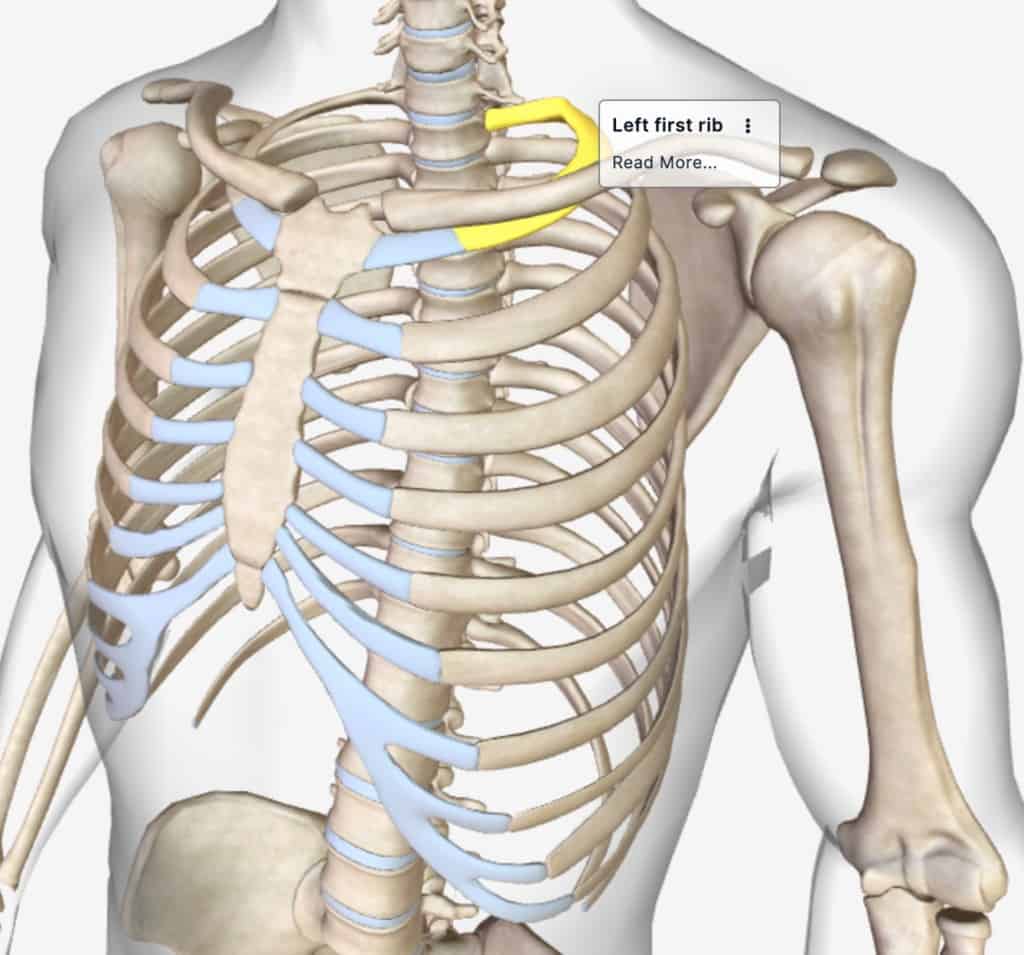
2nd ribs

3rd ribs
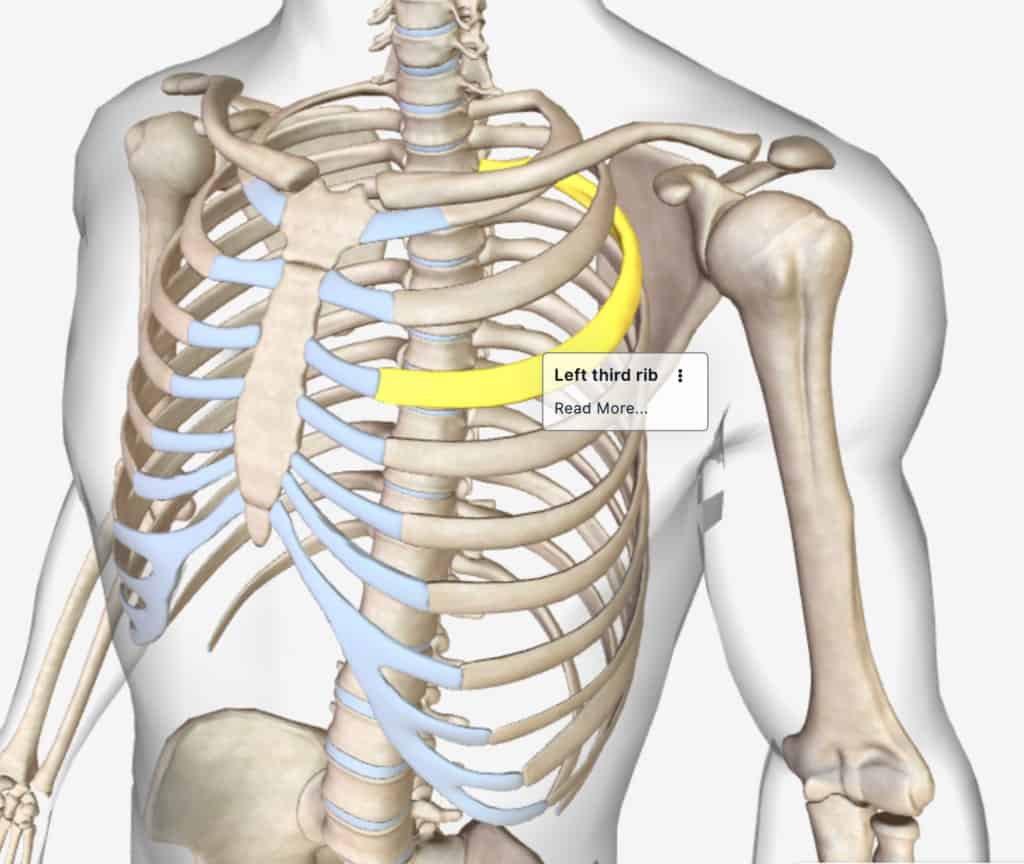
4th ribs

5th ribs
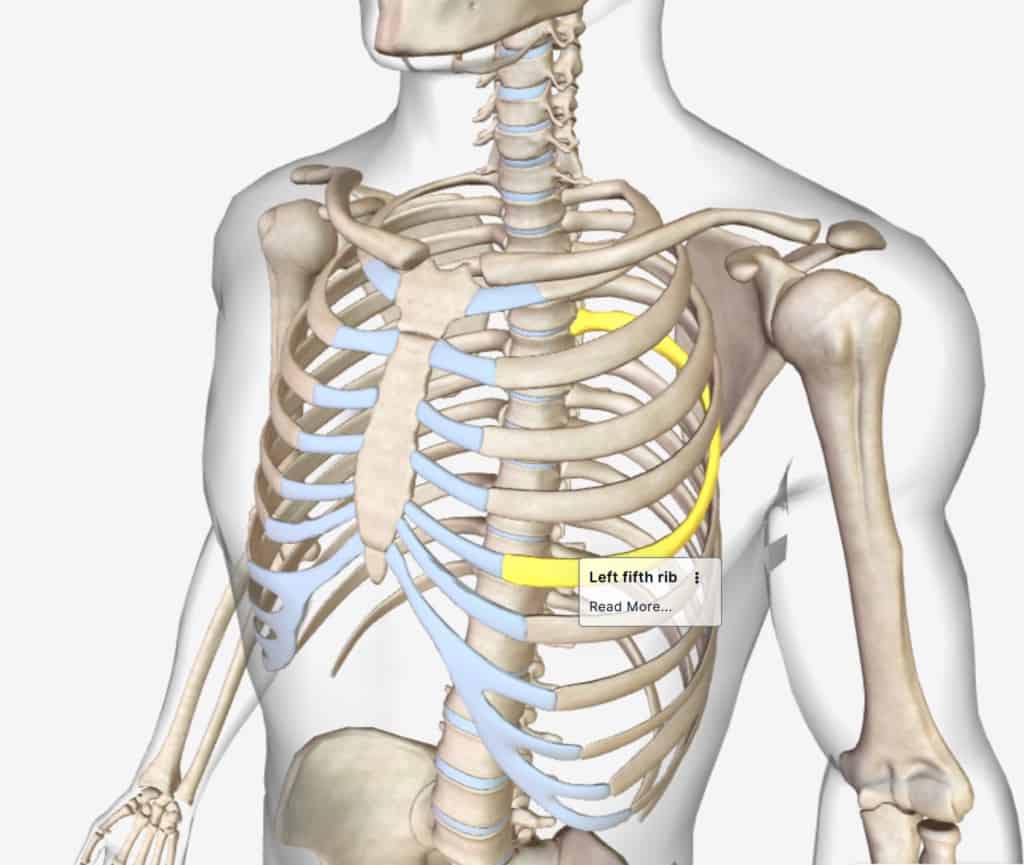
6th ribs

7th ribs
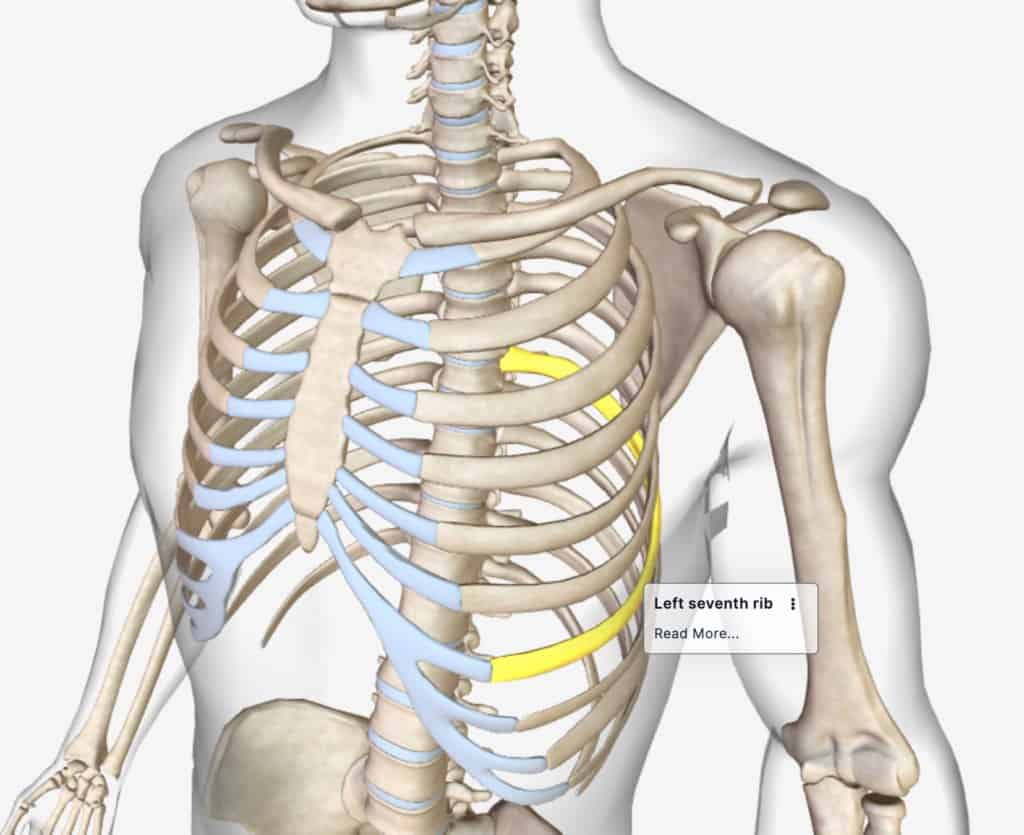
False ribs are the five pairs of ribs (ribs eight to twelve) that do not directly connect to the sternum. They are also known as asternal ribs or vertebrochondral ribs. The costal cartilages of the false ribs connect to the costal cartilages of ribs above (for ribs eight to ten) or end freely in the musculature (for ribs eleven and twelve).
The false ribs play a supporting role in the ribcage, helping to protect the lungs, heart, and other vital organs. They also contribute to flexibility in the trunk.
Here is a table summarizing the differences between true ribs and false ribs:
| Feature | True Ribs | False Ribs |
|---|---|---|
| Attachment to sternum | Directly connected | Do not connect directly |
| Number of pairs | 7 | 5 |
| Attachment to cartilage | Connect to costal cartilages of ribs above or end freely in musculature | Connect to costal cartilages of ribs above |
| Role | Provide strong support for the ribcage | Support the ribcage and contribute to flexibility |
False ribs(costae spuriae, VIII-XII). The false ribs consist of only 3 rib pairs, and, similarly to the true ribs, are also numerically called the
- 8th ribs
- 9th ribs
- 10th ribs
Parts of the Human Rib Bones
From the anatomy of the human rib cage, one can tell that the human Ribs bones have several parts:
- head (caput costae)
- neck (collum costae)
- body (corpus costae)
- frontal part of the rib.
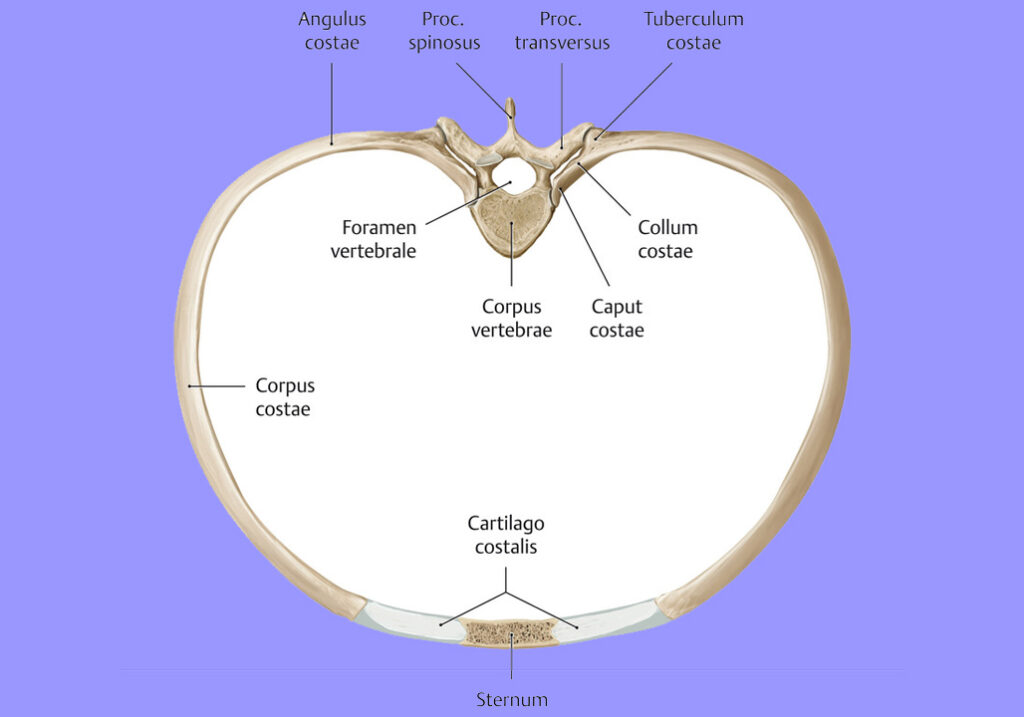
The head of the rib includes the
- articular surface
- facies articularis capitis costae.
The head of every rib (except in the case of the 1st, 11th, and 12th) includes an upper and lower part that is divided by the ridge, crista capitis costae.
The upper part is joined with the same numeral chest vertebra, and the lower one is joined with the first lower vertebra. The ridge itself is connected to the intervertebral plate.
The head of the 1st, 11th, and 12th ribs connect only with the same numeral vertebra.
The neck of the first 3-4 ribs is rounded, while others have the already mentioned ridge, crista colli costae. The neck ends with a nodule, tuberculum costae.On the bottom side of the nodule is the joint surface for connection with the transverse end of the same numeral vertebra, facies articularistuberculi costae.
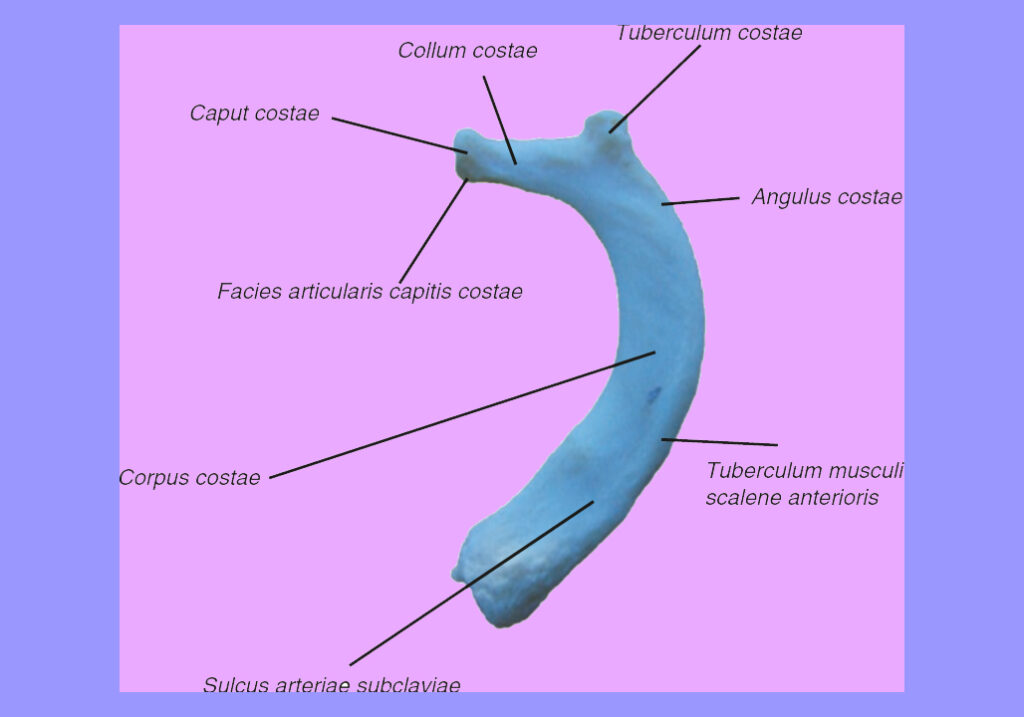
The exceptions are the 11th and 12th ribs that don’t have this surface, which enables them much higher mobility.
With the upper ribs, closer to the nodule (and lower ribs, a little further from the nodule) they are curved and have a rough surface that connects them with muscles, angulus costae.
Properties of the human ribs
A rib has a flat body, as you can see from the picture of the anatomy of the human rib cage. The upper edge is round and the lower sharp.
On the interior wall of the rib body is a channel, sulcus costae, with blood vessels and nerves. This furrow isn’t present in the 11th and 12th ribs. The front edge ends with an ellipsoidal shape on which the rib cartilage connects.
The rib’s length increases from the 1st to the 7-8th; after this, it decreases till the 12th. Ribs are also different in the curve: curve by radius, curve by the edge (horizontal plane), and according to the longitudinal axis.
A radius curve is higher at the beginning of the rib and smaller at the end. This curve increases according to the rib’s number, i.e. from 1st to 12th. Due to the edge curve, the head of the rib is in a higher position than its front end.
This is particularly evident in ribs that are in the middle. Due to the curve on the longitudinal axis, the interior plate on the back of the rib is pointed upwards, while on the front end, it is pointed downwards.
The first rib is short, wide, and flat without curves on its edge and axis. This is why its radius curve is very expressive. On the upper plate of the rib, there is an additional nodule, tuberculum musculiscaleni anterioris.
In the front and in the back of the nodule there are two channels. The front one is called sulcus venae subclaviae and the back one is called sulcus arteriae subclaviae. Both of them carry an equally named blood vessel.
The difference between True ribs vs false ribs

The difference between true ribs vs false ribs lies in their respective names.
What is a true rib?
The true ribs, also referred to as the proper ribs or vertebrosternal ribs, are directly connected to the sternum (or breastbone through their cartilages.
What is a false rib?
The false ribs are further divided into two, the false ribs (the 9th and the 10th ribs) and the floating false ribs (the 11th and the 12th ribs)
Differences between true ribs vs false ribs
- The false ribs, unlike the true ribs, are not connected to the sternum through their costal cartilage, but they either connect indirectly, over the cartilage of the 7th rib or are not connected to the sternum at all (in the case of the 11th and 12th rib), and that’s why the 11th and 12th ribs are called floating ribs (costae fluctuates).
- Side note: The floating ribs are less stable and are notoriously more susceptible to dislocations, popping, displacement/subluxation. When there’s a complaint about a dislocated rib, chances are, the floating ribs are the culprit. The floating ribs are also at a higher risk breaking more than the other ribs because they have only a single attachment dorsally to the spine or vertebrae.
- The floating ribs also have very thin and loosely connected bone tissue that is locked in muscle as they extend laterally.
- The rib cartilage of the 8th, 9th and 10th rib rounds upwards and connects to the cartilage of the next upper rib and after this also with the cartilage of the 7th rib, thus creating the rib arch, arcus costarum.
FAQs about the anatomy of the human ribs
How many floating ribs are there?
Floating ribs are also called false floating ribs. There are 2 pairs of floating ribs; the 11th and the 12th ribs.
What ribs 1-7 are called true ribs?
Ribs 1-7 are called true ribs because they are directly connected to the sternum (or breastbone through their cartilages.
Are there floating ribs in human?
Yes, there are. the ribs 11-12 are the floating ribs.
how many false ribs in the human ribs?
The false ribs consist of 3 pairs of ribs, the 8th, 9th, and 10th ribs.
how many true ribs are there?
There are 7 pairs or 14 sets of ribs that are called the true ribs.

